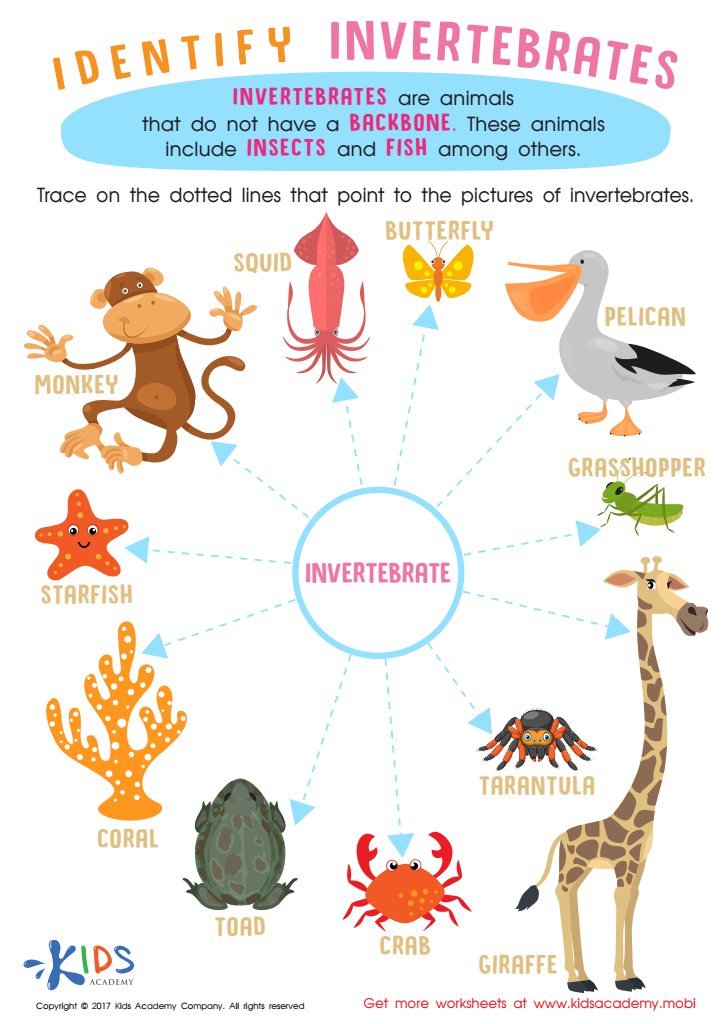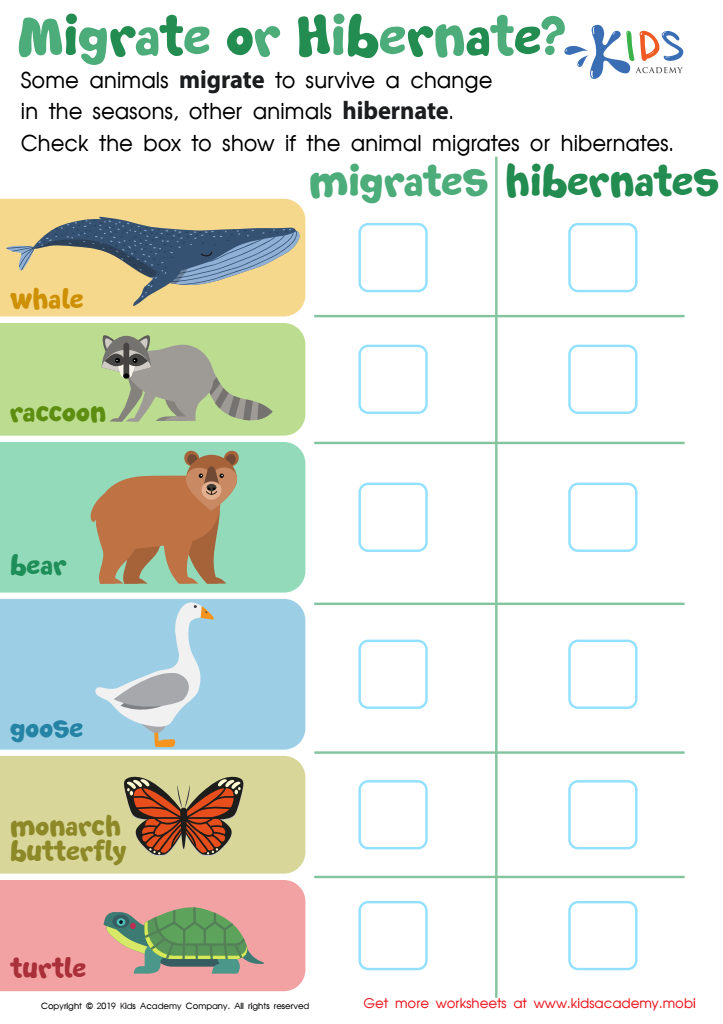Categorizing animals Science Worksheets for Ages 4-8
3 filtered results
-
From - To
Explore the wonders of the animal kingdom with our engaging "Categorizing Animals Science Worksheets" designed for ages 4-8. These worksheets make learning fun as students discover different types of animals, sorting them by categories such as mammals, birds, reptiles, and more. With vibrant illustrations and interactive activities, children will enhance their understanding of biodiversity and develop critical thinking skills. Our resources encourage hands-on learning, enabling kids to visualize and categorize various species, fostering a love for science. Perfect for the classroom or at home, these worksheets will inspire curiosity and reinforce essential knowledge about the animal world. Start your adventure today!


Studying Fossils Worksheet


Invertebrates Worksheet for Grade 3


Migrate or Hibernate? Worksheet
Categorizing animals is an essential aspect of science education for children ages 4 to 8, as it lays the groundwork for critical thinking and scientific reasoning. When parents or teachers engage young learners in categorizing animals, they help nurture curiosity about the natural world. Understanding classifications—such as mammals, birds, reptiles, insects, and amphibians—enables children to recognize similarities and differences among species, fostering observation skills that are vital for scientific inquiry.
This foundational knowledge not only introduces key scientific vocabulary but also encourages exploration and inquiry-based learning. As children practice sorting animals by various attributes, they develop analytical skills and learn to make connections between concepts, promoting cognitive development.
Moreover, discussing animal categories often leads to themes of ecology, conservation, and the diversity of life, instilling a sense of responsibility towards the environment from an early age. This can spark an interest in wildlife and nature, encouraging outdoor exploration and fostering a sense of wonder.
Ultimately, caring about animal categorization in early education helps cultivate informed, curious, and empathetic individuals who are better prepared to understand and navigate the complexities of the biological world as they grow.
 Assign to My Students
Assign to My Students








.jpg)











